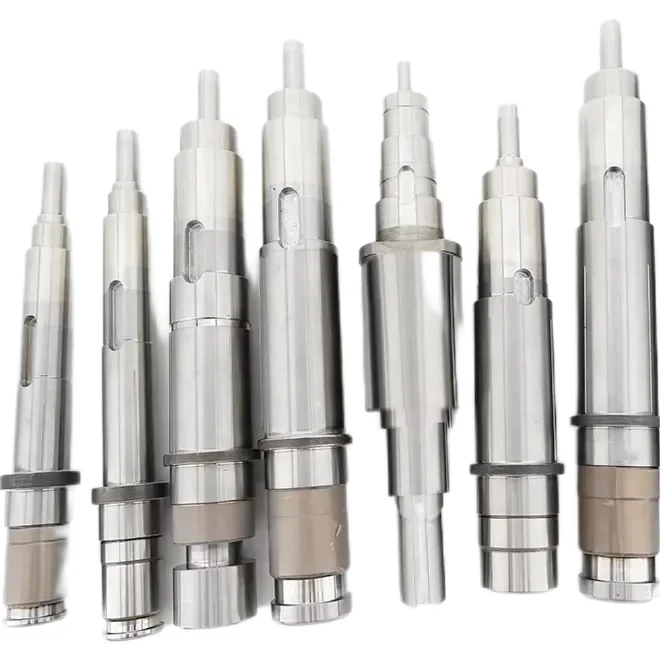- This topic is empty.
-
AuthorPosts
-
2025-09-11 at 4:57 pm #63294
In modern manufacturing, high precision CNC turning axis parts form the backbone of complex machinery and industrial systems. These components are produced through computer numerical control (CNC) technology, which allows for extraordinary accuracy in shaping metal, plastic, and composite materials. Unlike traditional manual turning, CNC methods ensure consistent performance across thousands of identical units. This precision is not simply a technical advantage—it is a necessity for industries where tolerances are measured in microns. In this blog post, as a professional CNC machining parts service provider, Vibo will share the application of high precision CNC turning axis parts for sale.
Why CNC Turning Axis Parts Are Critical for Modern Engineering
When engineers design high-performance systems, every single part contributes to the reliability of the whole. CNC turned axis parts with high precision are indispensable in this process because even the smallest deviation can result in mechanical inefficiencies, energy loss, or complete equipment failure. Their role is particularly evident in industries such as aerospace, automotive, robotics, and medical devices, where safety and performance standards leave no room for error.
Historical Transition to Precision CNC Turning Axis Parts
Manufacturing has evolved from manual lathes to automated CNC machines. Early production methods relied heavily on skilled machinists, but achieving identical output repeatedly was nearly impossible. The introduction of CNC technology in the mid-20th century revolutionized part-making, enabling precision axis turning parts that met global standards of repeatability and consistency. Today, industries demand not just accuracy but also speed and scalability, which CNC turning offers without compromise.

High Precision CNC Turning Axis Parts in Aerospace Applications
One of the most demanding sectors for CNC turning axis parts is aerospace engineering. Jet engines, landing gear systems, and satellite components all require parts manufactured with sub-millimeter accuracy. The high precision ensures fuel efficiency, reduced wear, and compliance with international aviation safety regulations. Without such accuracy, the performance of critical aerospace assemblies would be compromised, leading to increased operational risk.
Automotive Industry’s Dependence on CNC Turned Axis Parts
In the automotive sector, CNC machined turning axis components play a central role in engine construction, transmission systems, and steering mechanisms. With the global shift toward electric vehicles, the requirement for ultra-precise components has grown even stronger. High precision ensures smooth motion, reduced vibration, and longer service life of parts under high-stress conditions. The future of automotive engineering—lightweight designs and higher efficiency—relies heavily on innovations in CNC axis turning technology.
Medical Equipment Built on Precision CNC Turning Axis Technology
Few industries are as reliant on absolute accuracy as healthcare. Surgical instruments, orthopedic implants, and diagnostic devices often incorporate high precision CNC turned axis parts. For example, a small deviation in the dimensions of an implant could lead to patient discomfort or even medical complications. Here, precision is not only a technical requirement but also a matter of human safety. This illustrates how CNC technology extends beyond industrial use to directly influence human health and quality of life.
Robotics and Automation: Precision at the Core
As industries embrace automation, CNC axis turning parts of high precision are integral to robotic arms, conveyors, and automated assembly systems. Robots must operate with flawless repeatability, and that performance begins with components manufactured under strict tolerances. Precision turning ensures smooth gear engagement, accurate motion transfer, and long-term durability. In this context, CNC turning serves as both an enabler of automation and a beneficiary of its expansion.
Sustainability and High Precision CNC Turning Axis Parts
An emerging theme in manufacturing is sustainability. By creating precisely machined turning axis components, manufacturers reduce material waste and extend product lifespans. CNC technology allows for efficient use of raw materials, often optimizing cutting paths to minimize scrap. Moreover, accurate parts reduce system breakdowns and energy inefficiencies, contributing to greener industrial practices. Thus, high precision CNC turning not only drives performance but also supports environmental responsibility.
Challenges in Producing Precision CNC Turning Axis Parts
Despite the benefits, the production of CNC turned axis parts is not without challenges. Factors such as tool wear, thermal expansion, and programming complexity can affect outcomes. Manufacturers must maintain strict quality control through advanced measuring equipment and continuous calibration. Additionally, as component designs grow more complex, integrating five-axis and multi-tasking CNC systems becomes necessary, requiring significant investment and expertise.
Future Trends in CNC Turning Axis Precision Parts
The future of high precision CNC axis turning parts lies in digital integration. Smart factories increasingly connect CNC machines with AI-driven monitoring systems, enabling predictive maintenance and automated corrections during production. Additive manufacturing may also merge with CNC machining, allowing hybrid systems that combine material deposition with subtractive turning for complex geometries. These advancements suggest that precision will not only be maintained but also continuously refined.
Conclusion
The importance of high precision CNC turning axis parts extends far beyond technical specifications. They shape industries, enable medical innovations, power vehicles, and even influence sustainability goals. By ensuring absolute accuracy and repeatability, these components safeguard both industrial reliability and human safety. As technology advances, the precision of CNC turning will continue to define the boundaries of modern engineering
-
AuthorPosts
- You must be logged in to reply to this topic.